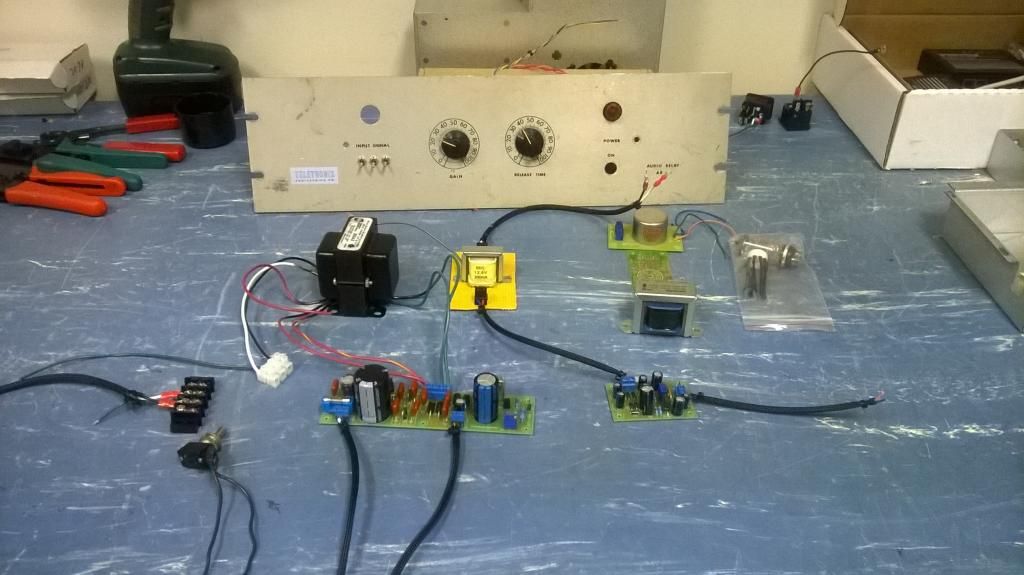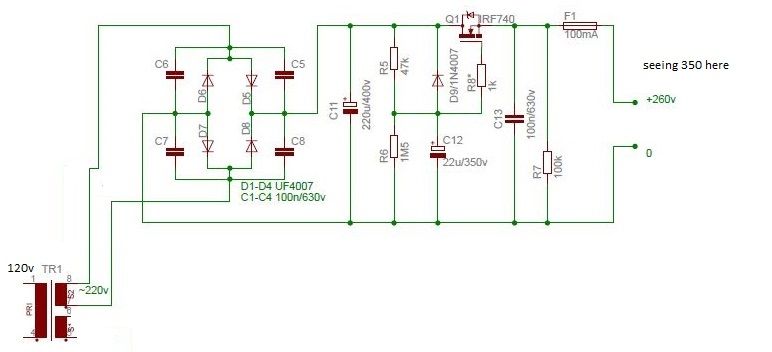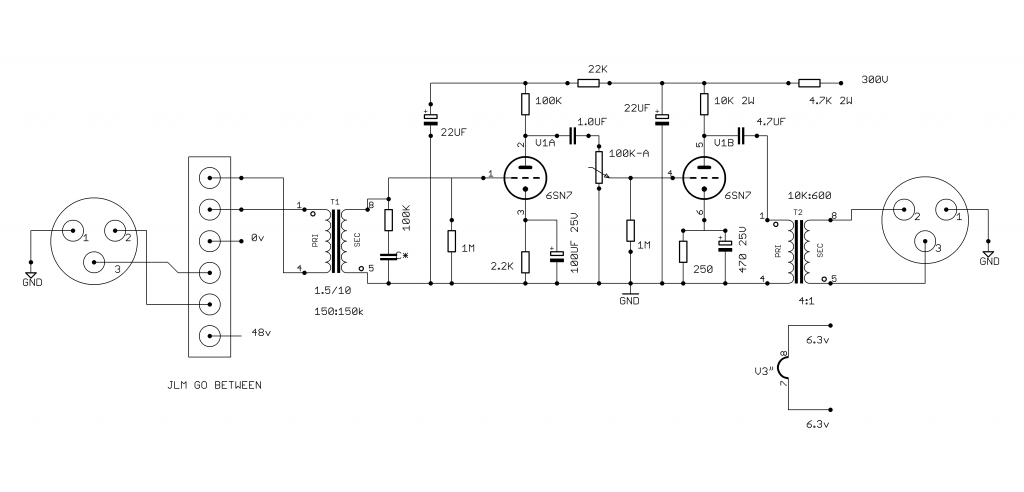I'm trying to build a one bottle style mic pre. what I have is a tube power supply kit built. 6.3v dc heaters 350v regulated dc plate. I have a separate 120 to 12v 300ma supply running into a regulated trippler lm317 style phantom circuit and a jlm audio go between kit and 2 transformers edcor xsk 10k/600ohm and a cinemag cm2511.
the issue I'm having is almost all the circuits I have found have a much lower plate voltage the closest being 300v. ny dave 1 bottle. I tried loading the output with a restive load 44k at 5 watts to see if it drops but it doesn't so here I am.
my math with the 2 resistors i had on hand was 44k at 350v 2.8watt = about 8ma of current.
current draw across load is only 8ma of the 100ma load of the transformers max was my load just to small to see a significent drop?
power supply kit and the parts I have

power supply section is here second tap goes to the 6v heaters.

circuit I'm interested in

or is there a better circuit I can use to make a pre that has about 60db max gain with what I have?
any help and more importantly references to material I can read, so I can actually understand what is going on to adjust the plate voltage would be awesome.
the issue I'm having is almost all the circuits I have found have a much lower plate voltage the closest being 300v. ny dave 1 bottle. I tried loading the output with a restive load 44k at 5 watts to see if it drops but it doesn't so here I am.
my math with the 2 resistors i had on hand was 44k at 350v 2.8watt = about 8ma of current.
current draw across load is only 8ma of the 100ma load of the transformers max was my load just to small to see a significent drop?
power supply kit and the parts I have

power supply section is here second tap goes to the 6v heaters.

circuit I'm interested in

or is there a better circuit I can use to make a pre that has about 60db max gain with what I have?
any help and more importantly references to material I can read, so I can actually understand what is going on to adjust the plate voltage would be awesome.





